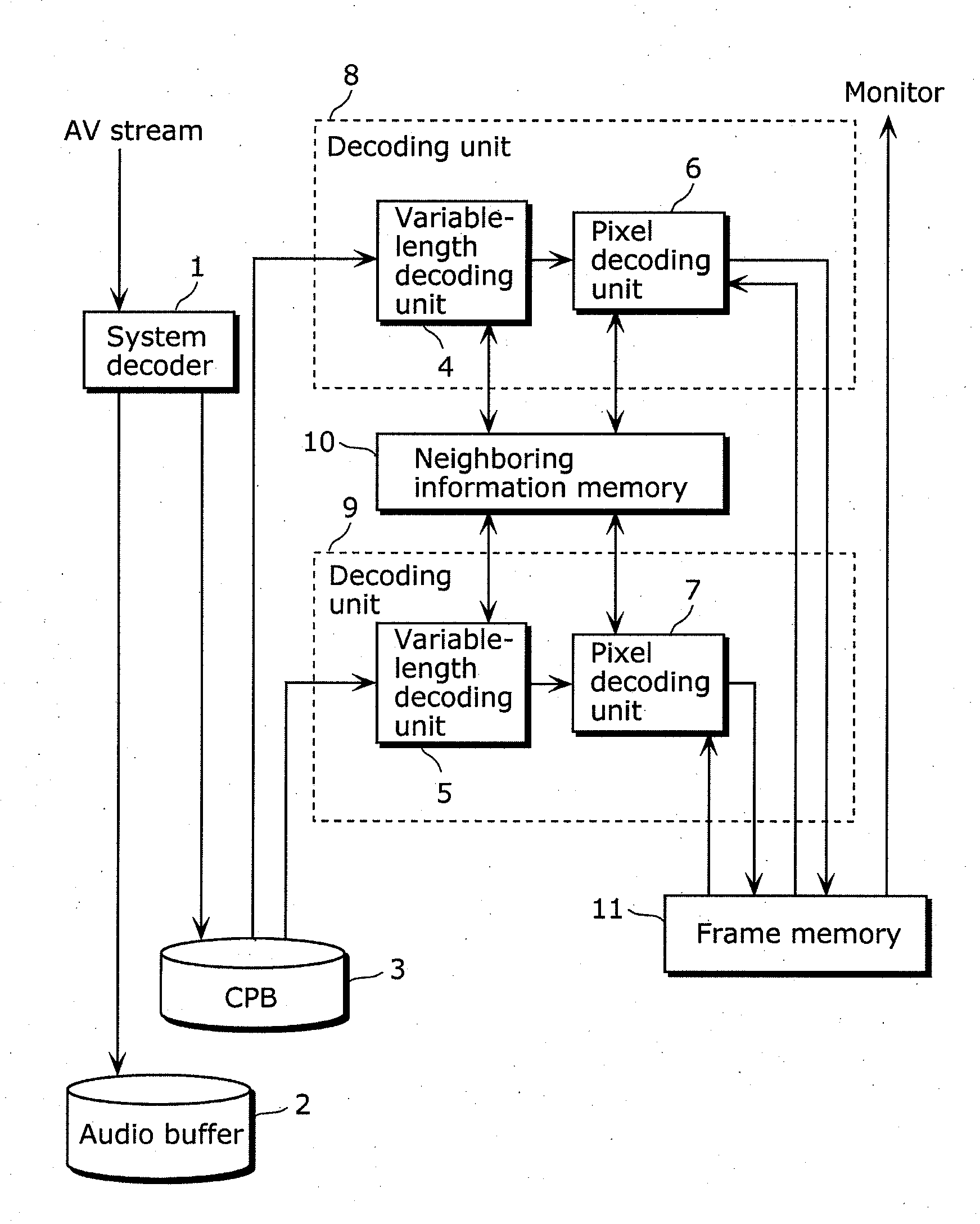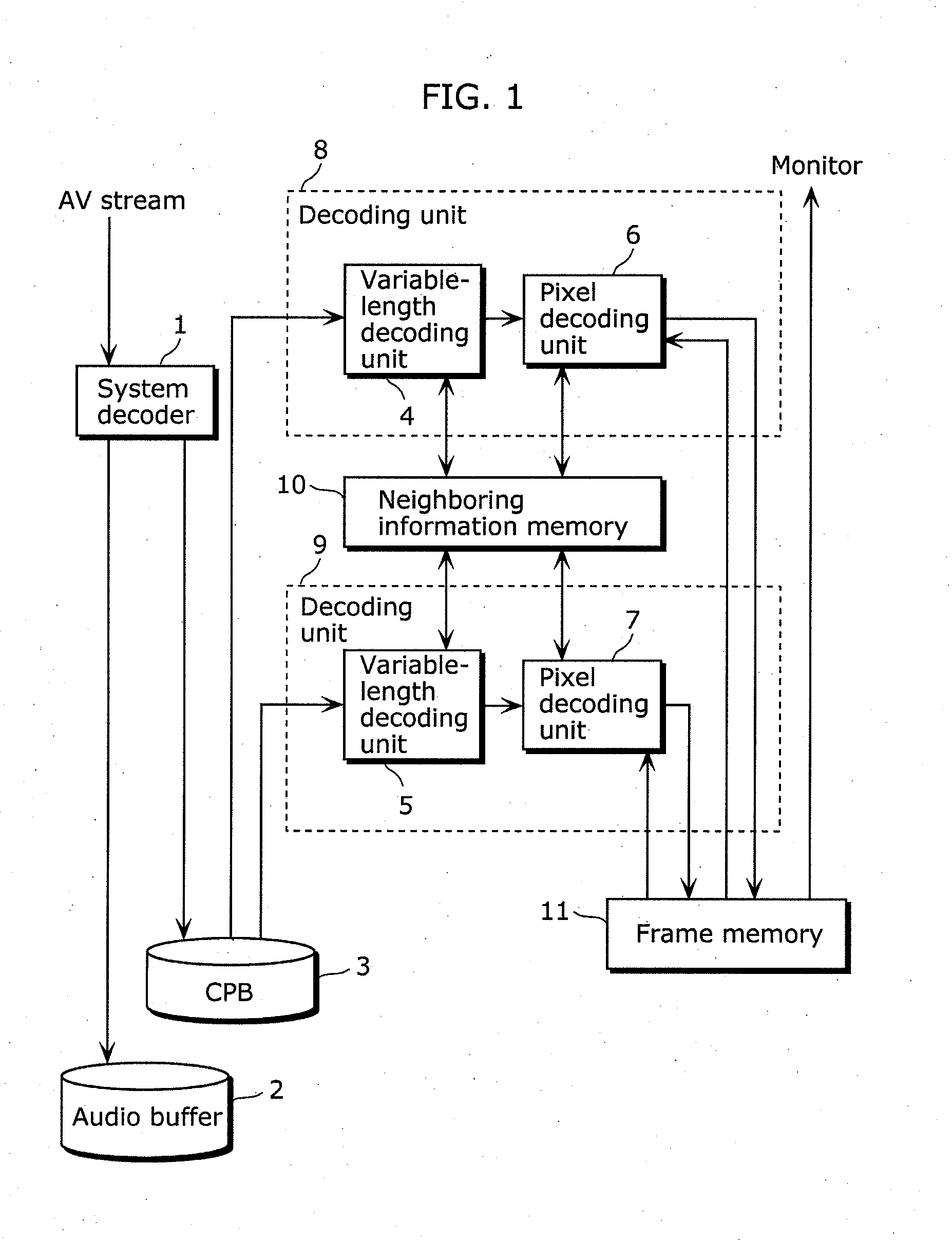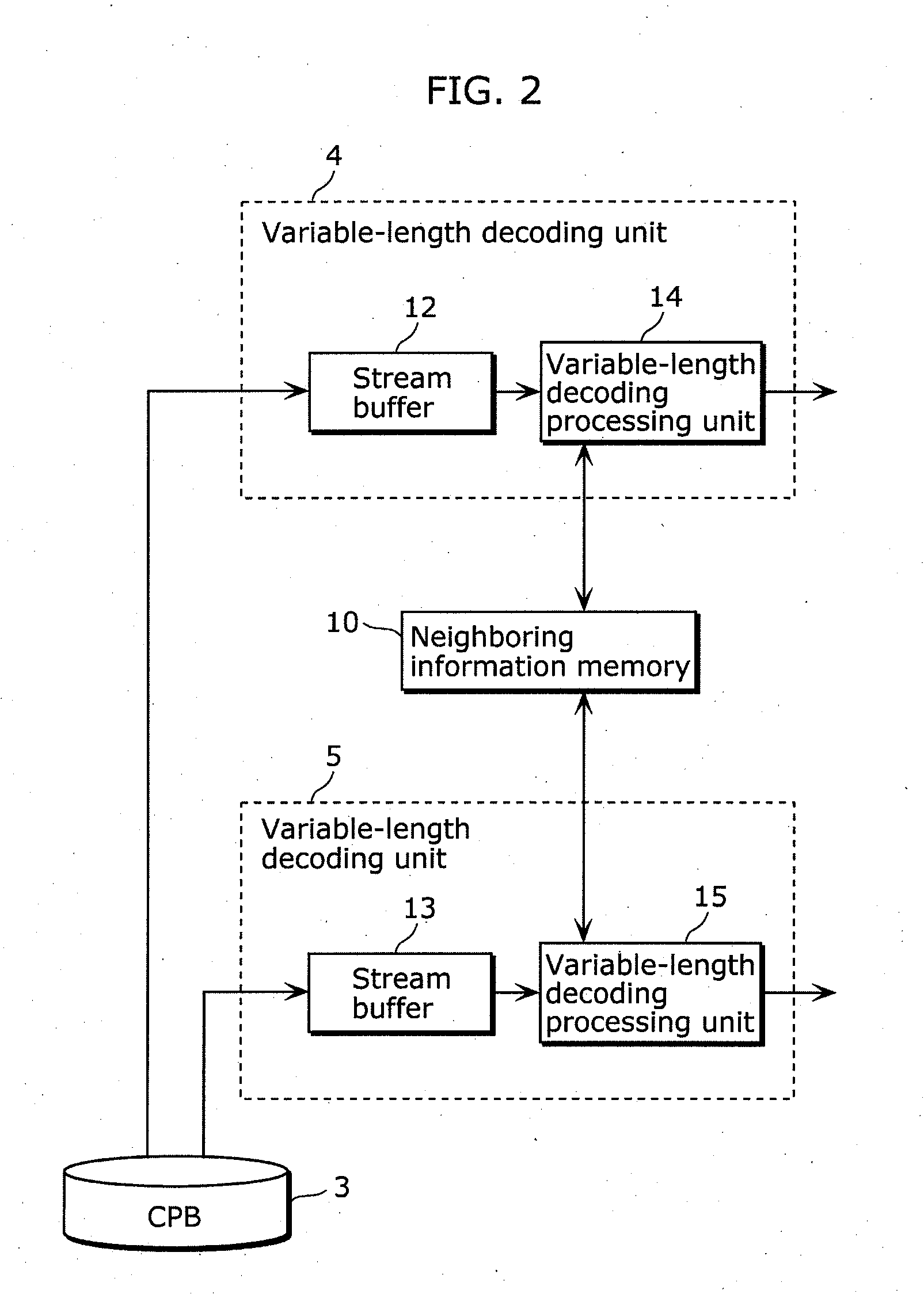Image decoding device, image coding device, image decoding method, image coding method, program, and integrated circuit
a decoding device and image technology, applied in signal generators with optical-mechanical scanning, color televisions with bandwidth reduction, etc., can solve the problems of increasing bit rate, reducing compression rate, image decoding device cannot reference decoding information, etc., and achieve smooth parallel processing
- Summary
- Abstract
- Description
- Claims
- Application Information
AI Technical Summary
Benefits of technology
Problems solved by technology
Method used
Image
Examples
embodiment 1
[1-1. Overview]
[0129]Firstly, an overview of an image decoding device according to Embodiment 1 of the present invention is described.
[0130]The image decoding device according to Embodiment 1 of the present invention reads a video stream separated from an AV-multiplexed stream by a system decoder, using a plurality of decoding units. The video stream is previously constructed so as be read by the decoding units. The decoding units execute the decoding process in synchronization with each other, by reference to each other's partial decoding result via a neighboring information memory.
[0131]This is the overview of the image decoding device according to Embodiment 1.
[1-2. Configuration]
[0132]Next, a configuration of the image decoding device according to Embodiment 1 is described.
[0133]FIG. 1 is a block diagram showing the configuration of the image decoding device according to Embodiment 1. The image decoding device in Embodiment 1 includes a system decoder 1, a coded picture buffer (...
embodiment 2
[2-1. Overview]
[0239]Next, an overview of an image decoding device according to Embodiment 2 of the present invention is described.
[0240]Embodiment 2 employs context adaptive variable length coding (CAVLC) adopted by the H.264 standard as one of the variable-length coding methods.
[0241]This is the overview of the image decoding device according to Embodiment 2.
[2-2. Configuration]
[0242]A configuration of the image decoding device according to Embodiment 2 is identical to the configuration according to Embodiment 1.
[2-3. Operation]
[0243]Next, an operation performed in Embodiment 2 is described with reference to FIG. 8 which is used for describing the operation in Embodiment 1. The operation of Embodiment 2 is different from that of Embodiment 1 in a variable-length-decoding arithmetic process (S111).
[0244]FIG. 19 is a diagram showing an example of a coded table in Embodiment 2. In FIG. 19, nC represents the number of non-zero coefficients in a neighboring macroblock.
[0245]As shown by...
embodiment 3
[3-1. Overview]
[0258]Next, an overview of an image decoding device according to Embodiment 3 of the present invention is described.
[0259]In Embodiment 3, a variable-length coding method is used for arithmetic coding. A variable-length decoding unit includes an arithmetic decoding unit, which allows the image decoding device in Embodiment 3 to be capable of arithmetic decoding.
[0260]This is the overview of the image decoding device according to Embodiment 3.
[3-2. Configuration]
[0261]Next, a configuration of the image decoding device according to Embodiment 3 is described.
[0262]FIG. 20 is a block diagram showing configurations of the variable-length decoding units included in the image decoding device in Embodiment 3. Components in FIG. 20 which are identical to those in FIG. 2 are not explained again here. The variable-length decoding unit 4 in Embodiment 3 supports arithmetic coding, and includes an arithmetic decoding unit 23 which performs arithmetic decoding and a de-binarization...
PUM
 Login to View More
Login to View More Abstract
Description
Claims
Application Information
 Login to View More
Login to View More - R&D
- Intellectual Property
- Life Sciences
- Materials
- Tech Scout
- Unparalleled Data Quality
- Higher Quality Content
- 60% Fewer Hallucinations
Browse by: Latest US Patents, China's latest patents, Technical Efficacy Thesaurus, Application Domain, Technology Topic, Popular Technical Reports.
© 2025 PatSnap. All rights reserved.Legal|Privacy policy|Modern Slavery Act Transparency Statement|Sitemap|About US| Contact US: help@patsnap.com



